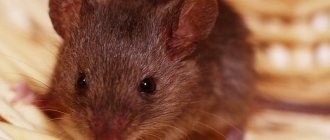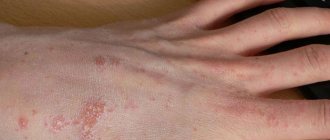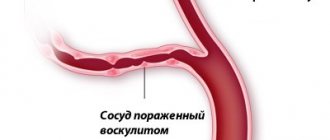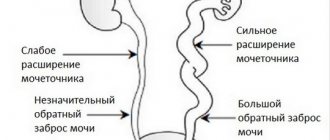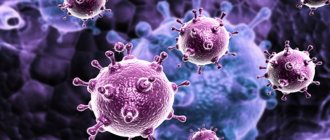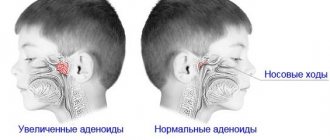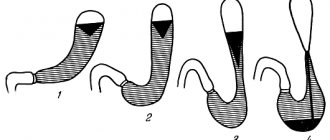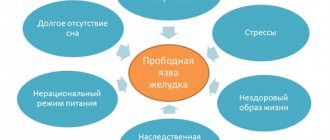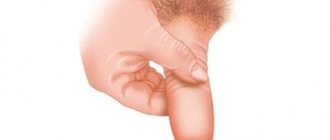PCR and serology for whooping cough
Polymerase chain reaction (PCR) is the study of bacterial DNA. The PCR method allows you to diagnose whooping cough at the molecular genetic level. Biological material is obtained by collecting sputum from a patient with whooping cough. The polymerase chain reaction method is often used when the results of bacteriological examination are negative.
Laboratory enzyme immunoassay is suitable for the period of illness when the body is already producing antibodies. The ELISA technique is based on the qualitative determination of antigens and specific antibodies in blood plasma. The presence of immunoglobulins M is characteristic of the disease itself, and immunoglobulins G circulate in the blood after an infection.
A serological test can be prescribed to retrospectively diagnose whooping cough, identify the source of infection and prevent its spread. Decoding the result will show an increase in the levels of specific immunoglobulins M and G to the toxins of Bordetella bacteria in the blood of sick and recovered children.
A general blood test for whooping cough indicates the presence or absence of an inflammatory process in the child’s body. Whooping cough can be suspected if the number of lymphocytes and leukocytes is elevated, but the ESR levels will be normal. Doctors recommend donating blood for analysis in the morning, before breakfast.
Treatment of whooping cough in the Russian Federation is included in the compulsory medical insurance program, and all necessary measures are carried out in state medical institutions. An alternative examination option is contacting diagnostic services. The laboratory consultant will explain the purpose of each test and give a detailed explanation of it.
A marker of current or recent Bordetella pertussis infection used in the diagnosis of whooping cough.
Whooping cough is a common infectious disease, despite widespread vaccination. The causative agent of whooping cough, Bordetella pertussis, attaches to the ciliated epithelium of the respiratory tract and produces toxins that suppress the activity of the epithelial cilia, cause local inflammation and impair bronchial clearance.
The incubation period of infection is usually 5 - 10 days (sometimes up to 3 weeks). This is a long-term disease in which 3 periods are distinguished: catarrhal (indistinguishable from a common cold), a period of spasmodic cough and a period of recovery. The development of acute and chronic complications, both infectious and non-infectious, is possible. Most of them develop during a period of spasmodic cough, which lasts from 1 to 6 weeks. Infectivity during this period decreases, but some patients continue to excrete the pathogen within 3 weeks from the onset of cough. In typical cases, the diagnosis is made based on the clinical picture; in people who do not have immunity, the classic manifestations of whooping cough are difficult to confuse with another disease. In immune individuals, symptoms are not as typical.
The reference method of laboratory diagnosis is culture of nasopharyngeal discharge in the first 2 - 3 weeks of illness; at a later date, the value of the study decreases. In a clinical blood test, lymphocytosis is observed (the absolute number of lymphocytes more than 10,000/μl indicates the systemic effect of pertussis toxin). The use of serological testing (antibodies to Bordetella pertussis cell antigens and Bordetella pertussis toxin) is advisable in later stages of infection; it has high specificity but relatively low sensitivity.
To confirm the diagnosis, molecular genetic (PCR) testing can be used.
Mechanism of transmission of infection
Whooping cough is caused by the gram-negative bacterium Bordetella pertussis. This microorganism quickly dies in the external environment: in an hour under the influence of direct sunlight, and in the cold literally in minutes. Therefore, whooping cough infection occurs only through contact with a patient or carrier of the disease.
Whooping cough cannot be contracted through household items, handkerchiefs, or toys.
The greatest susceptibility to pathogenic bacteria is observed in children aged 1 to 7 years. Infection occurs during a conversation with a sick person or when an infected person sneezes or coughs.
It is important how far a person is from the source of infection - the pathogenic bacterium is not transmitted more than 2-3 meters. Patients are most at risk in the first 7 days of spasmodic cough. The probability of infection is 98-100%.
The whooping cough bacillus enters the body through the nasopharynx and larynx. Having settled on the mucous membrane, the microorganism begins to produce toxins that provoke inflammation of small bronchioles.
A characteristic symptom of whooping cough is a paroxysmal cough. The mechanism of its occurrence is quite complex. Pertussis intoxication is accompanied by the release of specific substances: inflammatory mediators. The cough has signs of bronchial asthma and allergies, since it is dry and comes in spasms.
Of the total number of cases, 95% are children. The immaturity of the mucous membranes of the respiratory tract in a child explains the frequency of whooping cough infection. Prolonged intense coughing attacks in infants have a detrimental effect on proper ventilation and respiratory function. In children under 2 years of age, whooping cough can lead to short-term respiratory arrest.
There are 3 forms of whooping cough:
- Typical - the disease develops according to the classical scenario;
- Atypical - the patient is periodically bothered only by a spasmodic cough without other clinical signs;
- Carriage, when a person is not sick, but spreads the pertussis bacteria.
Adults usually suffer from whooping cough in a latent form, without the typical symptoms of the disease. Patients are often misdiagnosed and treatment is unsuccessful. People who have recovered from the disease develop immunity to whooping cough for life. The disease is characterized by seasonality: the peak incidence occurs in November and December.
How to determine whether a patient has pertussis bacillus in his body
Currently, various laboratories make it possible to quickly identify any infectious pathogen of the respiratory tract.
For example, tests and bacteriological cultures can be done at Invitro or other similar diagnostic centers. There are several methods for examining a patient’s body for whooping cough:
Bacteriological seeding of material on a nutrient medium;
It is carried out at the initial stage of development of whooping cough or parawhooping cough. Previously, the cough plate method was used to identify Bordetella bacillus. As soon as a child begins to have an attack, a Petri dish with a nutrient medium for growing bacteria is placed at a distance of up to 10 centimeters from his mouth. Drops of sputum containing an infectious pathogen get inside the container, after which a culture of microorganisms grows over the course of 2-3 days. But this research method cannot be used for newborns who do not have coughing attacks.
An informative diagnostic test of sputum for whooping cough is taking a smear from the child’s nasopharynx. But it can only be carried out up to a month from the onset of the inflammatory process. Further, it will be impossible to collect mucus with pertussis infection on the mucous membranes of the upper respiratory tract.
Linked immunosorbent assay;
It is considered the most accurate bacteriological study. The price of diagnostics depends on the price list of the laboratory center where the analysis will be performed. The approximate cost can be 500-1000 rubles. For example, in the Invitro laboratory the price of ELISA does not exceed 800 rubles. Antibodies to whooping cough are detected in the blood if the patient is infected with the Bordet-Gengou bacterium. Enzyme immunoassay is performed 3 weeks after the development of the disease, not earlier.
Serological method;
Blood diagnostics are carried out to determine the concentration of antibodies to pertussis bacillus. It is usually necessary to do several treatments to see an increase in titer. Your pediatrician will tell you where to get tested for whooping cough.
Polymerase chain reaction;
Molecular diagnostics of the patient's biological material will help identify the Bordetella genome. For examination, a swab is taken from the nasopharynx or throat. For the results to be correct, the patient should not eat food three hours before taking the material. PCR allows you to accurately determine the presence of whooping cough bacteria and exclude any other infections, including parawhooping cough. The diagnostic efficiency is 100% effective, but it is best carried out a month after the onset of catarrhal symptoms. Further, the sensitivity of the analysis decreases.
It is important to note that PCR results are practically not affected by the use of antibacterial agents. But when diagnosing vaccinated patients, polymerase chain reaction does not always identify pertussis infection rather than transient carriage
Therefore, additional studies are prescribed for this group of patients.
A complete blood count may also be done to detect whooping cough. Infected patients will have an increased white blood cell count. Moreover, the more severe the degree of the disease, the more there will be. But in vaccinated children these indicators may be within normal limits.
A general urine test is done if it is necessary to determine the development of any complications in the body of a patient with whooping cough. Blood biochemistry is prescribed for the same purpose. A general examination of sputum distinguishes whooping cough from bronchitis, ARVI, tuberculosis, and pneumonia.
Where to get tested for whooping cough and which diagnostic method should be used, the specialist treating the patient will tell you.
Incubation period of the disease
There are three main types of whooping cough - the first causes the most rapidly progressing and severe type of the disease, the second and third - milder and slowly developing forms.
Therefore, in children, the incubation period lasts differently. Usually it ranges from 2 to 14 days, with the average value being 7 days.
The duration of the latent form of the disease is influenced not only by the type of whooping cough bacillus, but also by a number of other factors, including: the child’s health at the time of infection, age, the presence of chronic respiratory diseases, etc. The only way to protect against infection is timely vaccination (children in the first year of life are given three vaccinations). But this method does not provide a 100% guarantee.
If a vaccinated child gets sick with whooping cough, the pathology occurs with less severe symptoms and almost never causes complications.
Features of diagnosing whooping cough in children
There are often cases when blood test results in children differ significantly from the standard manifestations of whooping cough and parawhooping cough.
In addition, the parallel development of some other infection can provoke complications, due to which the treatment of whooping cough and parawhooping cough will not be carried out on time.
Specific cases may be seen in some patients. Even after successful treatment of the disease and relief from all symptoms, the same blood test result may remain.
Even in the case of a previous illness, if it is correctly diagnosed and treated, the results of the blood test should return to normal. A condition is considered normal when leukocytosis acts only as a temporary phenomenon that does not last more than 1.5 weeks after complete cure of the disease. Subsequently, class G immunoglobulins are formed in the blood. They are responsible for the presence of permanent immunity against whooping cough and parawhooping cough. Detection of such antibodies occurs by serological analysis.
There is no guarantee that even a person who has had the disease and is vaccinated will not be able to get whooping cough or parawhooping cough a second time.
Therefore, it is very important to have the necessary knowledge about this disease
Source
How can you get whooping cough?
This disease most often affects preschool children from two to five years old. Whooping cough can affect teenagers and adults. How whooping cough is transmitted in children is necessary to know in order to protect the child from infection. When talking, sneezing or coughing, the bacterium can enter the respiratory system of a healthy person along with the air.
Important! Answering the parents’ question: “Is whooping cough contagious or not, can you get infected through toys and household items?” You should know that the whooping cough bacterium dies outside the human body! But you can become infected from a sick person through conversation or communication.
There is no exact answer to how contagious the carrier of the infection is, so doctors believe that the incubation period lasts for three weeks from the moment the bacteria enters the human body. All this time the person is contagious!
What consequences may there be
Whooping cough is a dangerous disease and can cause complications in children. Therefore, treatment should be started as quickly as possible.
Attention! In babies under one year old, coughing fits can cause respiratory arrest, which can lead to death!
How dangerous is whooping cough in children and what consequences can it provoke? The virus can cause various diseases if not treated correctly:
- pneumonia, with the addition of a secondary infection;
- encephalopathy, when the nervous system is damaged, convulsions and paralysis may appear;
- bleeding from the nasal passages into the brain, into the bronchi;
- lung diseases (emphysema, atelectasis);
- fast weight loss.
The risk group includes infants and preschool children.
Important! Find out the symptoms of whooping cough in children under one year old so that you can start treatment in a timely manner!
Differential diagnosis of whooping cough
The differential diagnostic method makes it possible to exclude a number of possible diseases in patients and establish the only correct diagnosis. Correctly conducted differential diagnosis of whooping cough allows the patient to be given adequate treatment in a timely manner, thereby easing the course of the disease.
Whooping cough should be differentiated from ARVI, parawhooping cough, bronchitis, bronchial asthma, the presence of foreign bodies in the respiratory tract, pneumonia, tuberculous bronchoadenitis, etc.
- The greatest difficulty is in diagnosing the disease in the catarrhal period
. Whooping cough during this period has many similarities with a whole group of acute respiratory viral diseases, as well as measles and parawhooping cough. Whooping cough during this period is characterized by a persistent, increasing cough and the absence or weak severity of catarrhal phenomena of the upper respiratory tract. During this period, it is necessary to use express methods and bacteriological diagnosis of whooping cough. - During attacks of spasmodic cough,
whooping cough should be distinguished from acute respiratory diseases with obstructive syndrome, acute viral diseases with predominant damage to the lower parts of the respiratory apparatus, respiratory mycoplasmosis, tuberculous bronchoadenitis, foreign body aspiration, mediastinal tumor, bronchopulmonary form of cystic fibrosis.
Characteristic attacks of convulsive cough with prolonged exhalations are not always present in children who have received vaccinations, for example, DPT. Therefore, doctors and parents expect that a whooping cough test will dot the i’s. The infectious disease is especially severe in children of the first year of life. The incubation period averages 1–2 weeks, the initial symptoms resemble ARVI.
The genus Bordetella unites 9 species of bacteria, of which B. pertussis and B. parapertussis have strong pathogenic properties - respectively, the causative agent of whooping cough and parapertussis (whooping cough-like infection). These are gram-negative, aerobic coccobacilli. The pathogenic properties of B. pertussis are associated with the release of pertussis toxin of a protein nature. Toxic bacterial substances in inactivated form are included in pertussis vaccines.
The optimal temperature for growing Bordetella culture during bacteriological sowing is 35°C. The causative agent of whooping cough reproduces on a special medium of potato-glycerin or casein-charcoal agar. After a few days, colonies appear that have a convex shape with a silvery surface. As the isolated strains are stored, variability appears; first of all, the immunogenic properties of the pathogen change.
Treatment of whooping cough according to E. Komarovsky
When treating whooping cough in children is carried out at home, E. Komarovsky recommends relieving symptoms with folk remedies, and be sure to carry out prevention. The child is placed on his side in bed, this reduces the severity of coughing attacks. They constantly give him something to drink - at the rate of 100 ml of liquid per 1 kg of weight.
Herbal teas made with berries and medicinal herbs - raspberries, linden leaves, elderberries, thyme leaves - are well suited for drinking. They have an anti-inflammatory effect, strengthen the immune system, and make it possible to actively sweat, which is important, according to E. Komarovsky. After all, with sweat, toxins are eliminated through the skin, which speeds up the child’s recovery.
The famous doctor E. Komarovsky urges parents not to be afraid of fresh air, to constantly ventilate the entire apartment and especially the child’s room. Fresh air relieves swelling on the mucous membranes and reduces cough. Experienced pediatrician E. Komarovsky recommends humidifying the air in the child’s room using special devices.
Hanging washed or dampened laundry over heating radiators carries its own danger - the residue of the detergent released with water vapor irritates the respiratory tract and causes allergies in the child.
Treatment and prevention of whooping cough
Pediatricians and infectious disease specialists are involved in the treatment and prevention of whooping cough. If you become ill with whooping cough, you should seek medical help from a doctor or paramedic as soon as possible.
Principles of whooping cough treatment
When the disease “whooping cough” is detected, treatment and prevention of complications of the disease can be carried out both at home and in a hospital. This will depend on the age of the patient, the severity of the disease, the presence or absence of complications and some other nuances.
In therapy, adherence to a certain diet, regimen, prescription of antibiotics and other medications play an important role.
Whooping cough vaccine
Vaccination against whooping cough plays a key role in preventing this disease in children. Some parents tend to delay vaccinations for their children, considering them very dangerous in the first year of life. In addition, many parents refer to the baby’s innate immunity from all infectious diseases, as well as the fact that breastfeeding will help the child not contract dangerous infections. But it is for babies that whooping cough is most dangerous. And it is against whooping cough that the child does not have innate protection, and he will not receive it through breast milk. Therefore, postponing vaccination without compelling reasons is inappropriate.
Features of vaccination against diphtheria, whooping cough and tetanus
Prevention of whooping cough by vaccinating the population is quite effective. Vaccination begins in childhood. According to the vaccination calendar, immunization against whooping cough starts at three months of age. Vaccination is usually carried out against several diseases at once (diphtheria, whooping cough, tetanus). There are no single vaccines for whooping cough.
For good prevention of whooping cough, three vaccinations are required: first at 3 months, then at 4.5 months, then at 6 months. That is, the minimum interval between immunizations is one and a half months. At the age of one and a half years, revaccination against whooping cough is carried out. If the vaccination schedule has been violated, revaccination is carried out 12 months after the last whooping cough vaccination.
The whooping cough vaccine can be given using a variety of vaccines. There are whole-cell and acellular vaccines. The latter are much less likely to cause post-vaccination reactions and complications, so their use is especially recommended for children with a history of allergies. However, prevention of whooping cough using whole cell vaccines is more effective.
The most widely used whole-cell vaccine in our country is DPT (which stands for adsorbed pertussis-diphtheria-tetanus vaccine). This is a domestically produced vaccine that protects against the following diseases: diphtheria, whooping cough, tetanus. The British vaccine Infanrix provides protection against the same diseases, but it is acellular.
In addition to DPT, whole-cell vaccines include vaccines not only against diphtheria, whooping cough and tetanus, but also against other diseases. Thus, the French vaccine Tetracok also protects against polio, while the Russian vaccine Bubo-Coc plus provides immunity against hepatitis B.
Some acellular (cell-free) combination vaccines also contain active components not only against whooping cough, diphtheria, tetanus, but also against other diseases. Thus, the French vaccine Pentaxim, in addition to protecting against these diseases, is a prevention of hemophilus influenzae infection and polio. The Infanrix Hexa vaccine additionally protects against Haemophilus influenzae, polio and hepatitis B. There are other combination vaccines against these diseases.
Vaccination against whooping cough does not provide protection against the disease for life; after three years of life, immunity from infection gradually decreases.
How to treat whooping cough with folk remedies
Treating whooping cough poses a major challenge for doctors. In difficult cases, the child is hospitalized in the infectious diseases department, especially if there is a risk of complications: sleep-disordered breathing, when additional medical intervention is urgently required. In a hospital, the doctor always prescribes antibiotics along with symptomatic treatment.
If the disease is mild, the child is left at home, treatment is prescribed, and the parents administer it themselves. Where to treat children for whooping cough is determined by the doctor based on the symptoms and clinical picture of the disease.
When treating at home, the doctor recommends using folk remedies for coughs as an additional effect to strengthen the immune system. There are positive reviews from those who cured whooping cough in children with folk remedies, were able to relieve severe symptoms and at the same time carried out medication prescribed by the doctor.
Such parents recommend listening to the doctor’s advice and adding traditional medicine prescriptions to the main drug therapy.
Folk recipes for whooping cough, proven over the years:
Etiology of whooping cough
Whooping cough is an acute airborne infection caused by microorganisms of the species Bordetella pertussis, characterized by damage to the mucous membrane mainly of the larynx, trachea, bronchi and the development of convulsive paroxysmal cough.
The bacteria that cause whooping cough were first isolated from a sick child in 1906 by two scientists - the Belgian Jules Bordet (the genus is named after him) and the Frenchman Octave Zhangou (in honor of both of them, the causative agent of whooping cough is also called the Bordet-Gengou bacillus). In addition to describing the microbe, they developed a nutrient medium for its cultivation, which is widely used to this day and is also called Bordet-Gengou medium in their honor.
In modern taxonomy, Bordetella belongs to the domain Bacteria, order Burcholderiales, family Alcoligenaceae, genus Bordetella. Within the genus, 9 species are described, 3 of which are predominantly pathogenic for humans:
- most often the disease is caused by B. pertussis, the causative agent of whooping cough, an obligate human pathogen;
- B. parapertussis is the causative agent of parapertussis (whooping cough-like disease, clinically similar to whooping cough), also isolated from some animals;
- B. trematum is a causative agent of wound and ear infections, described relatively recently.
There are 4 more species that are causative agents of animal diseases, but are also potentially pathogenic for humans (they cause infections in especially rare cases, usually in immunocompromised patients):
- B. bronchiseptica is the causative agent of bronchisepticosis (whooping cough-like disease of animals, in humans it occurs as an acute respiratory infection);
- B. ansorpii, B. avium, B. hinzii. B. holmesii is isolated only from humans, usually during invasive infections (meningitis, endocarditis, bacteremia, etc.), but the etiological role of this species in the development of infections has not been proven.
- B. petrii is the only representative of the genus isolated from the environment and capable of living in anaerobic conditions, but the possibility of its long-term persistence in humans has been described.
Previously, until the 30s of the last century, Bordetella was erroneously assigned to the genus Haemophilus only on the grounds that it was necessary to add human blood to the media for their cultivation.
Most media are still filled with defibrinated human blood. However, Breadford in later studies showed that blood is not a growth factor for Bordetella and an essential component during cultivation, but plays more of an adsorbent role for toxic metabolic products of bacteria.
In terms of genotype and phenotypic properties, Bordetella also differ significantly from Hemophilus, which was proven by Lopes in the 50s of the 20th century. This made it possible to distinguish them into an independent genus.
Atypical forms of whooping cough
In vaccinated children, whooping cough is not as pronounced as in the absence of vaccination. Infection with Bordetella pertussis leads to the development of atypical forms of pertussis infection:
- Erased
. It manifests itself as an obsessive, dry cough, but the attacks are easily tolerated, there is no wheezing, and there is no vomiting. Treatment with conventional cold remedies is ineffective. - Abortive
. It manifests itself as catarrhal changes and spasmodic cough, which can only bother you for 5-7 days. - Asymptomatic
. There are no signs of the disease, the pathogen is detected only during laboratory diagnostics. Contact persons are most often examined, therefore the subclinical form of whooping cough is most often detected in this group of people.
With any atypical form of the disease, the sick person is contagious to others.
Where to get tested
Upon referral from a doctor, a blood test is taken in any clinical laboratory.
If you contact a government agency, the procedure will be completely free, since it is included in the compulsory health insurance program. Results are obtained in 4-6 days. In a situation where the patient’s condition is poor, express tests are performed, the first results of which are obtained within 2-4 hours. The material is collected in the morning on an empty stomach. Also, significant physical activity should not be allowed before taking the test. Before collecting the material, you can only drink clean water. Before the test, adults should completely quit smoking and alcohol at least 12 hours before donating blood.
Based on the results of tests and examinations, not only the diagnosis is determined, but also the severity of the disease. The attending physician decides whether outpatient treatment is possible or whether the patient must be urgently hospitalized. In most cases, adults are treated on an outpatient basis, and children in a hospital.
You will also find the article “Bacterial infection based on blood tests in children: methods of detection and difference from viral infections” useful.
Whooping cough symptoms
The incubation period of the disease from the moment of infection to the appearance of the first symptoms of whooping cough is 5-14 days. At this time, the bacterium colonizes the respiratory tract.
The next period is called prodromal or catarrhal, when harbingers of the disease appear. The average duration of this period is 7-14 days.
It is characterized by the following symptoms:
A person develops a dry cough, which does not bother him too much during the daytime, but intensifies in the evening.
Body temperature can rise to 38 degrees.
A slight runny nose may occur.
In general, the person feels satisfactory, his health is not significantly impaired.
The prodromal period of whooping cough resembles the development of a common acute respiratory infection, so at this stage diagnosis is extremely difficult.
The next stage of the disease is called the spasmodic period. It is characterized by the following symptoms:
The cough becomes paroxysmal.
It always ends with convulsive twitching of the body.
Cough shocks are accompanied by sputum production.
Vomiting may occur at the end of the attack.
During a cough, a change in complexion is often observed; it becomes bluish-red. The tongue is stuck out.
Number of attacks per day: 5-40.
Cough is more common during night rest.
An attack is characterized by apnea, when a person stops breathing for a period of 30 to 60 seconds.
A severe attack may result in involuntary loss of urine and feces.
A characteristic sign of whooping cough is the formation of ulcers on the frenulum of the tongue, since during coughing the patient injures it with the lower incisors.
The final stage of the disease is the period of reverse development. It is characterized by a gradual fading of symptoms and stabilization of body temperature.
It should be noted that even after the body completely defeats the disease, the cough will haunt it for some time. The average time for complete disappearance of cough is 3 weeks.
For another 6 months, a person may continue to experience increased irritability and fatigue. Immunity during illness is significantly reduced, so the body is susceptible to various respiratory viral diseases.
Biological properties of the pathogen
The causative agents of whooping cough are gram-negative small rods, the length of which approaches the diameter, and therefore resemble oval cocci under microscopy, called coccobacteria; have a microcapsule, pili, are immobile and do not form spores.
They are aerobic, develop better in a humid atmosphere at a temperature of 35-36°C, and are “fastidious” or “capricious” bacteria with complex nutritional needs in terms of cultivation conditions. In addition to the nutritional base and growth factors, nutrient media must include adsorbents of toxic metabolic products of Bordetella, which are actively released during their life activity.
There are 2 types of adsorbents:
- defibrinated human blood, added in an amount of 20-30% to Bordet-Gengou medium (potato-glycerin agar) and which is not only an adsorbent, but also an additional source of native proteins and amino acids;
- activated carbon, used in semi-synthetic media such as casein charcoal agar (CCA), bordetellagar. The quality of semi-synthetic media can be improved by adding 10-15% defibrinated blood.
Colonies of the pertussis microbe are small (about 1-2 mm in diameter), very convex, spherical, with smooth edges, gray in color with a silvery tint, resembling droplets of mercury or pearls. They have a viscous consistency and grow in 48-72 hours, sometimes growth takes up to 5 days.
Colonies of the parapertussis microbe are similar to whooping cough, but larger (up to 2-4 mm), darkening of the medium may be detected around them, and a creamy or even yellow-brown tint may appear on the AMC; formation time is 24-48 hours.
When studying Bordetella colonies using a stereomicroscope under side illumination, the so-called comet tail is visible, which is a cone-shaped shadow of the colony on the surface of the medium, but this phenomenon is not always observed.
B. pertussis, unlike other members of the genus, is biochemically inert and does not decompose urea, tyrosine, carbohydrates, or utilize citrates.
Antigenic and toxic substances of Bordetella are quite diverse and are represented by the following groups: surface structures (microcapsule, fimbriae), structures localized in the outer membrane of the cell wall (filamentous hemagglutinin, pertactin) and toxins, the main of which involved in pathogenesis is pertussis toxin (PT ), consisting of component A (S1 subunit), which causes toxicity, and B (S2-, S3-, S4-, S5 subunits), responsible for attaching the toxin to ciliated epithelial cells.
Endotoxin, heat-labile toxin, tracheal ciliotoxin, and adenylate cyclase also play an important role. All of the above factors are present in freshly isolated strains of the pertussis microbe.
Of the Bordetella antigens, the most interesting are the surface ones, localized in the fimbriae, the so-called agglutinogens, otherwise called “factors”. These are non-toxic proteins with low molecular weight, which are important in the formation of protection against pertussis infection and are revealed in agglutination reactions, which was the reason for their name.
Anderson and Eldering, back in the 50s of the last century, described 14 Bordetella agglutinogens, designating them with Arabic numerals (currently 16 are already known). The generic common to all Bordetella is agglutinogen 7; specific for B. pertussis – 1 (obligatory), intraspecific (strain) – 2-6, 13, 15, 16 (optional); for B. parapertussis - 14 and 8-10, respectively, for B. bronchiseptica - 12 and 8-11. Their detection is used in the laboratory diagnosis of whooping cough to differentiate the corresponding species and to separate B. pertussis strains into serological variants.
The four existing serovars of B. pertussis are identified by combinations of factors 1, 2, 3; 100; 1, 2, 0; 1, 0, 3; 1, 2, 3.
An excerpt characterizing Whooping Cough
– You were angry that he did not enter these 700 rubles. After all, he wrote them in transport, but you didn’t look at the other page. “Dad, he’s a scoundrel and a thief, I know.” And he did what he did. And if you don’t want to, I won’t tell him anything. - No, my soul (the count was embarrassed too. He felt that he was a bad manager of his wife’s estate and was guilty before his children, but did not know how to correct this) - No, I ask you to take care of business, I’m old, I... - No, daddy, you will forgive me if I did something unpleasant to you; I know less than you. “To hell with them, with these men with money and transport all over the page,” he thought. Even from the corner of six jackpots, I once understood, but from the page of transport, I don’t understand anything,” he said to himself and since then he has not intervened in business anymore. Only one day the Countess called her son to her, told him that she had Anna Mikhailovna’s bill of exchange for two thousand and asked Nikolai what he thought to do with it. “That’s how it is,” answered Nikolai. – You told me that it depends on me; I don’t like Anna Mikhailovna and I don’t like Boris, but they were friendly with us and poor. So that's how it is! - and he tore the bill, and with this act he made the old countess cry with tears of joy. After this, young Rostov, no longer intervening in any matters, with passionate enthusiasm took up the still new business of hound hunting, which was started on a large scale by the old count. It was already winter, morning frosts were binding the earth, wetted by autumn rains, the greenery was already flattened and brightly green separated from the stripes of browning, cattle-killed, winter and light yellow spring stubble with red stripes of buckwheat. The peaks and forests, which at the end of August were still green islands between the black fields of winter crops and stubble, became golden and bright red islands among the bright green winter crops. The hare was already half worn out (molted), the fox litters were beginning to disperse, and the young wolves were larger than the dogs. It was the best hunting time. The dogs of the ardent, young hunter of Rostov not only entered the hunting body, but also got beaten up so much that in the general council of hunters it was decided to give the dogs a rest for three days and on September 16 to leave, starting from the oak grove, where there was an untouched wolf brood. This was the situation on September 14th. All this day the hunt was at home; It was frosty and bitter, but in the evening it began to cool down and thaw. On September 15, when young Rostov looked out the window in the morning in his dressing gown, he saw a morning that nothing could be better for hunting: as if the sky was melting and descending to the ground without wind. The only movement that was in the air was the quiet movement from top to bottom of microscopic drops of mg or fog descending. Transparent drops hung on the bare branches of the garden and fell on the newly fallen leaves. The soil in the garden, like a poppy, was glossy and wet black, and at a short distance merged with the dull and damp cover of fog. Nikolai stepped out onto the wet, muddy porch: it smelled of withering forest and dogs. The black-spotted, wide-bottomed bitch Milka with large black protruding eyes, seeing her owner, stood up, stretched back and lay down like a hare, then suddenly jumped up and licked him right on the nose and mustache. Another greyhound dog, seeing its owner from the colored path, arched its back, quickly rushed to the porch and, raising its tail, began to rub against Nikolai’s legs. - Oh goy! - at this time that inimitable hunting call was heard, which combines both the deepest bass and the most subtle tenor; and from around the corner came the arriving and hunting Danilo, a Ukrainian-style, gray-haired, wrinkled hunter with a cropped hair, a bent arapnik in his hand and with that expression of independence and contempt for everything in the world that only hunters have. He took off his Circassian hat in front of the master and looked at him contemptuously. This contempt was not offensive to the master: Nikolai knew that this Danilo, who despised everything and stood above all else, was still his man and hunter. - Danila! - said Nikolai, timidly feeling that at the sight of this hunting weather, these dogs and the hunter, he was already seized by that irresistible hunting feeling in which a person forgets all previous intentions, like a man in love in the presence of his mistress. -What do you order, your excellency? - asked the protodeacon's bass, hoarse from raking, and two black shining eyes glanced from under their brows at the silent master. “What, or won’t you be able to stand it?” as if those two eyes said. - Nice day, huh? And the chase and the gallop, eh? - Nikolai said, scratching Milka’s ears. Danilo did not answer and blinked his eyes. “I sent Uvarka to listen at dawn,” his bass voice said after a moment of silence, “he said, he transferred it to the Otradnensky order, they were howling there.” (Translated meant that the she-wolf, about whom they both knew, moved with the children to the Otradnensky forest, which was two miles from the house and which was a small place.)
Laboratory diagnostics
To identify whooping cough, the following tests are prescribed:
- General blood analysis.
- General urine analysis.
- Sputum analysis.
- Bacteriological culture.
- PCR technique.
- Immunological research.
- Latex microagglutination technique.
UAC
If there is a suspicion of an infectious nature of the disease when coughing, and in addition to this symptom there is also fever and weakness, a blood test and its interpretation are simply necessary.
It can provide accurate information about whether there is an inflammatory process in the body. But a blood test cannot tell us the reason for this process, so it is carried out only together with other tests that can show the general clinical picture of the patient’s condition. Do not forget that a blood test is always taken on an empty stomach.
OAM
If there is a suspicion of whooping cough, when examining urine, attention is paid to the presence of sediment, as well as the color and transparency, acidity and specific gravity of the discharge. This test helps identify possible complications
In the normal course of the disease, urine does not undergo significant changes.
The biomaterial for analysis (urine) is collected in the morning, always in a clean container, it is best if it is purchased at a pharmacy. You need to take your urine to the laboratory as quickly as possible (no later than 2 hours after collection), then the efficiency of the analysis will be higher.
Sputum
This analysis makes it possible to distinguish whooping cough from other diseases such as influenza, tuberculosis and bronchial asthma. Just as with urine analysis, the color, transparency and acidity of sputum are studied in the laboratory.
In addition, attention is drawn to the presence of bloody streaks. With whooping cough, the sputum produced should be mucus-like
If this characteristic changes, it means that some other disease has joined.
Sputum is usually collected in the morning, since its active production occurs at night. Before this, the patient should not brush his teeth, eat or take medications. It is only necessary to rinse the mouth.
Bacteriological culture
The collection of material for analysis is done by a medical worker, capturing particles of material from the surface of the back wall of the patient’s throat with a special swab. Such sampling must be carried out on days 5-7 of illness, before starting antibiotic therapy, otherwise the results of the study may be false.
Conducting an analysis 3 weeks after the onset of the disease will be uninformative. To make the study more reliable, it is carried out twice, for example, on days 5 and 6 after the onset of whooping cough.
Before taking the test, the patient should not brush his teeth, eat or drink, or gargle. If this could not be avoided, you will be able to take the test no sooner than after 2-3 hours.
PCR technique
This method of diagnosing whooping cough is the best, since false negative results are rare, and effectiveness is recorded in 80% of cases. CPR is carried out in the first 3-4 weeks from the onset of the disease, when the pathogen, Bordetella pertussis, is still present in the mucous membrane of the respiratory tract. The material for this study is obtained by taking a scraping from the back wall of the pharynx. Decryption takes 1–2 days.
Before the test, you are not allowed to brush your teeth, eat or drink for about 2-3 hours. Shortly before collecting the material, you can gargle with warm boiled water.
How is an immunological test performed?
The material for this study is a blood test and nasal discharge that checks for the presence of antibodies to whooping cough, namely immunoglobulin M (Ig M), which is found in the blood, and there should be immunoglobulin A (IgA) in the nasal mucus. .
At different stages of the disease, certain types of tests for such antibodies are performed. They can be detected only from 3 weeks after the onset of the disease. At elevated concentrations they persist for another 3-4 months.
Latex microagglutination technique
This is an express method of laboratory diagnostics, the results of which can be obtained within 30–40 minutes after collecting the material. This study allows you to identify antigens of the causative agent of whooping cough, if they have already been developed. This technique uses pathogen antigens at the decay stage, which can occasionally lead to false-positive results.
Why is it important to diagnose the disease on time?
A hundred years ago, whooping cough was considered a deadly disease. Almost every sick child died from it. Today the situation has improved greatly, but Bordetella pertussis is still a problem.
The toxins produced by the whooping cough pathogen poison the entire body, causing respiratory failure and associated hypoxia. With a sharp increase in the level of carbon dioxide in the blood, all conditions are created for the development of encephalopathy. Whooping cough is especially difficult for infants.
With late diagnosis and illiterate treatment, children experience serious disorders of the respiratory system - a collapse of the lung lobe may occur, pneumonia, severe bronchitis, and asthma may develop. The activity of the cardiovascular and nervous systems is disrupted; during severe coughing, hemorrhages appear in the skin and conjunctiva of the eyes, and vomiting occurs.
In addition to the fact that the patient suffers himself, in the first weeks whooping cough is very contagious and poses a serious threat to others. With early detection of the disease, there is a chance to stop the development of bacteria and reduce the virulence of the disease to a minimum. The benefits of early detection of the disease include the rapid recovery of properly treated children and adults.
Diagnosis of whooping cough is based on a variety of laboratory data. Each analysis is informative in its own way and is necessary in a strictly defined period. When deciphering the results, one should take into account the characteristics of immunity in newborns, the presence of vaccination and the use of antibiotics. All these factors can somewhat distort the indicators, so you should not interpret the analyzes yourself. It is better to entrust the decoding to a specialist - a pediatrician or local therapist.
Author: Elena Medvedeva, doctor, especially for lechim-gorlo.ru
Testing for pertussis using the fluorescent antibody technique
The low proportion of bacteriological confirmation of the disease became the impetus for the development of other, more sensitive methods for identifying the causative agent of whooping cough. In the 60s, a method for identifying Bordetella pertussis using fluorescent antibodies appeared. Specially processed smears are viewed under a fluorescent microscope. Only highly qualified personnel are allowed to carry out this test; high-quality reagents are used. Otherwise, a large number of false positive results are possible. This technique is rarely used in practical medicine.
Rice. 7. Specially processed smears are viewed under a fluorescent microscope.
Mechanism of disease development
The place for infection to develop is the mucous membrane of the larynx, trachea and bronchi. The pathogen, with the help of microvilli, attaches to the cells of the ciliated epithelium of the respiratory tract, multiplies and forms colonies.
This process is accompanied by the production of toxins that destroy the mucous membrane. The result of this is the direction of the reflex impulse to the brain and the development of cough. Such changes characterize the catarrhal stage of the disease.
After the death of the pathogen, the toxins that are inside them are re-released. In this case, the epithelial cells of the respiratory tract are further damaged and die. Nerve impulses to the brain follow a continuous stream, overstimulating the cough and respiratory centers. These processes determine the stage of the main clinical manifestations. A paroxysmal spasmodic cough occurs, which is a characteristic symptom of whooping cough.
Prolonged overexcitation of certain brain structures leads to their inhibition. Clinically, this is accompanied by apnea (temporary cessation of breathing) lasting up to 2 minutes.
Damage to the epithelium of the respiratory tract, a decrease in the body's defense mechanisms are excellent conditions for the addition of pathogenic flora and the development of bacterial complications (pneumonia).
Thus, the pathogenesis of whooping cough can be reduced to 7 stages:
- Entry of the pathogen into the human body.
- Attaching and colonizing it on the mucous membrane of the respiratory tract.
- Release of toxins that damage and kill epithelial cells.
- Excitation of the cough and respiratory centers.
- Death of the pathogen, accompanied by repeated release of toxins.
- Overexcitation of brain structures.
- A pronounced decrease in immunity and the addition of secondary pathogenic microflora.
Cells of the ciliated epithelium of the larynx, trachea and bronchi are prone to regeneration. It takes a long time to restore a large area of damage, resulting in a long-term residual cough (up to several months).
Diagnosis of the disease
Currently, the diagnosis of whooping cough and parawhooping cough is an assessment of the entire picture of the disease and the existing symptoms
Particular attention is paid to examining nasal mucus and taking swabs from the nasopharynx and oropharynx. Blood tests are also not ignored; any changes in them must be identified by a doctor
Since whooping cough and parawhooping cough are infectious diseases, they are diagnosed by detecting bacteria (pertussis bacillus) in a blood sample. But most often, signs of the disease are detected during the examination of smears, since the bacterium penetrates into the blood quite rarely.
Blood test for whooping cough and parawhooping cough
In order to accurately determine the presence of the disease, the patient must undergo a blood test for whooping cough and parawhooping cough.
- First you need to donate blood for a general analysis. At this stage, the number of leukocytes, platelets and hemoglobin will be determined. Whooping cough and parawhooping cough are infectious diseases, therefore, in the presence of whooping cough bacillus, an increase in the number of leukocytes, as well as the number of neutrophils, will be noticed, since they are responsible for antibacterial immunity. The remaining blood components remain virtually unchanged.
- The most effective test for detecting pertussis bacillus is an enzyme-linked immunosorbent assay. To do this, a blood sample will be taken from a vein from a patient suspected of having whooping cough or parawhooping cough. This analysis is the detection of immunoglobulin protein antibodies to the causative agent of the disease. It can be carried out no earlier than three weeks after the onset of the disease. Therefore, its main task is to confirm the diagnosis rather than detect the disease.
- There is also a serological method of blood testing to detect the disease. It is based on determining the amount of antibodies to whooping cough and parapertussis, which indicate the presence of an infectious process in the body.
- Various types of blood tests to detect pertussis bacteria include the agglutination test. Using the agglutination reaction, antibodies to the antigens of the pathogen are detected, which is at the initial stage of the disease. The disadvantages of this procedure include the fact that at the moment there is still no single method for carrying out the agglutination reaction. Therefore, the meaning of the results obtained can be perceived and deciphered in different ways.
Interpretation of test results
When a pertussis bacillus is identified as a result of a blood test, we can say that the whooping cough bacillus has moved to a new level of development. That is, it does not exist as a local disease, but develops at a systemic level. In this case, there is a possibility of extensive proliferation of the microorganism, since blood is an excellent environment for the successful development of almost any microorganism. If we consider the pertussis bacillus specifically, then for this bacterium the only favorable environment for its growth is blood.
If the bacteria spreads throughout the body, dissemination syndrome may develop. Its treatment is a rather labor-intensive process and does not always end with a good result.
If, during the study of the results of a blood test, the presence of pertussis bacillus was detected in the body, the patient must be urgently hospitalized in the intensive care unit to provide medical care and prescribe the necessary treatment. This must be done as quickly as possible, since there is a fairly serious threat to the patient’s life.
There are cases when test results turn out to be false positive. This phenomenon often occurs as a result of the persistence of pertussis bacillus antigens in the patient’s body (after already cured whooping cough or parapertussis).
In this situation, the only method for diagnosing the disease is PCR to identify the type of genetic material that could provoke the body to such a reaction.
Incubation period
Like any other disease, regardless of its nature, whooping cough has an incubation period. This definition must be understood as the period of time from the moment pathogenic bacteria enter the body until the first pathological symptoms of the disease appear. The incubation period for whooping cough can range from 3 days to 2 weeks. After this, it is replaced by a catarrhal period, a period of coughing, resolution and convalescence (recovery).
Once whooping cough begins, the incubation period is asymptomatic, so this becomes the main reason for late seeking medical help. During this period, patients can quite easily infect the people around them (after all, they are considered infectious in the last days of incubation). According to calculations and research data, it has been proven that the duration of this moment is 5-8 days.
The length of the incubation period for whooping cough is calculated by determining the date when infection was likely to occur. To do this, first of all, it is necessary to subtract the minimum and maximum incubation period from the day the first pathological manifestations of the disease appear. As a result, we get the time period during which the infection could have occurred. Based on the calculations, the original source of infection can be determined.
How does infection occur?
Most often, children under the age of 6-7 years become infected with whooping cough. Moreover, in children under 2 years of age, the likelihood of infection is 2 times higher than in older children.
The incubation period for whooping cough is 1-2 weeks. For 30 days, the child should not visit a child care facility or have contact with other children, as whooping cough is highly contagious. Infection is only possible through airborne droplets during close contact with a sick person or bacteria carrier when he sneezes or coughs.
Outbreaks of the disease occur more often in the autumn-winter period. This is explained by the fact that whooping cough bacteria quickly die in the sun, and the length of daylight in winter and autumn is minimal.
Signs of pneumonia
Pneumonia is one of the most common complications. Since parents know that whooping cough does not go away quickly, they do not always consult a doctor if there is a change in the baby’s condition. However, in some cases, delay is dangerous, so it is necessary to show the child to a specialist. Warning signs that require immediate treatment include:
Temperature increase. If this happens 2-3 weeks after the onset of whooping cough attacks, the baby does not develop a runny nose.
Increased cough after the child’s condition has already begun to improve. A sudden increase in the duration and frequency of attacks.
Rapid breathing between attacks. General weakness.
